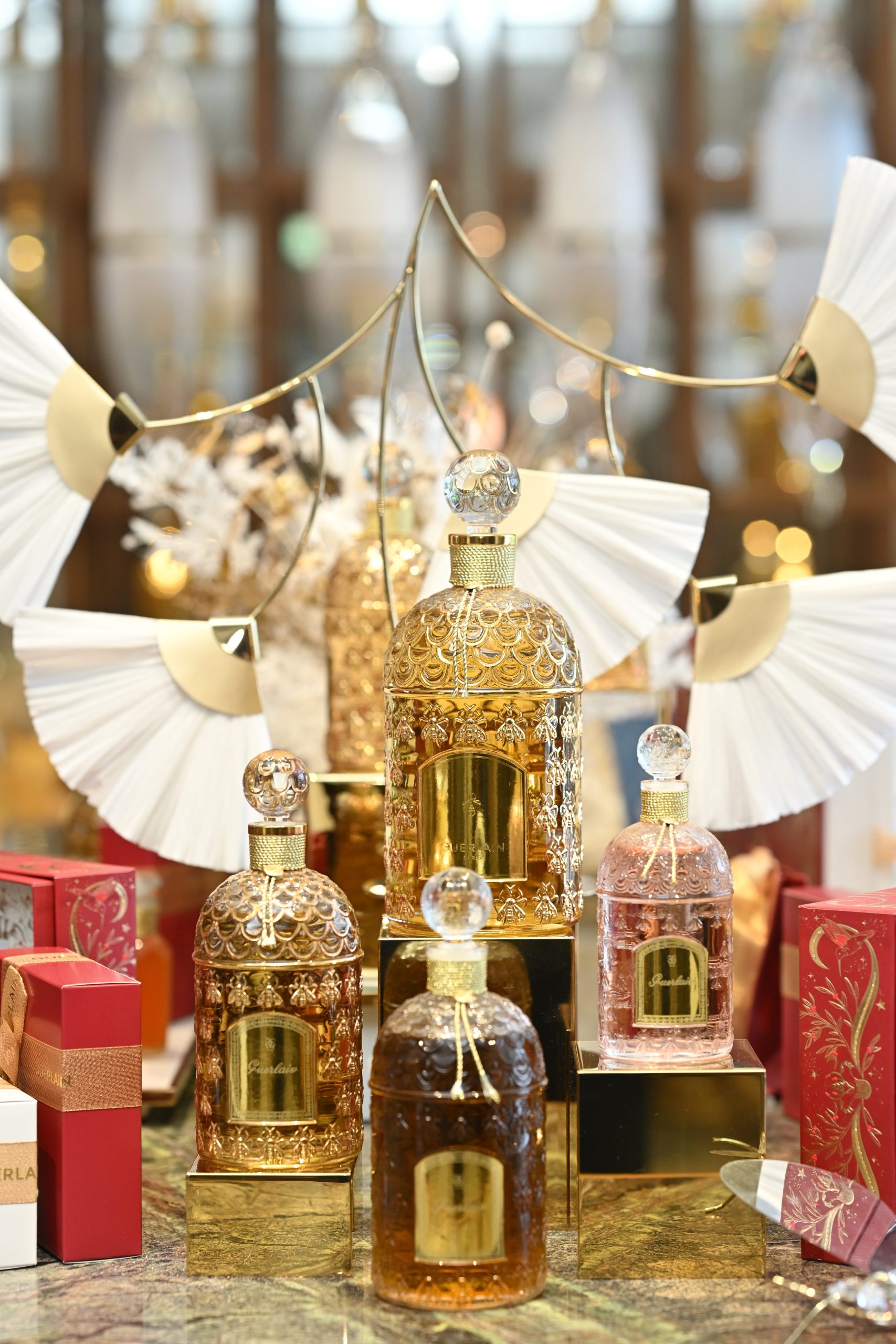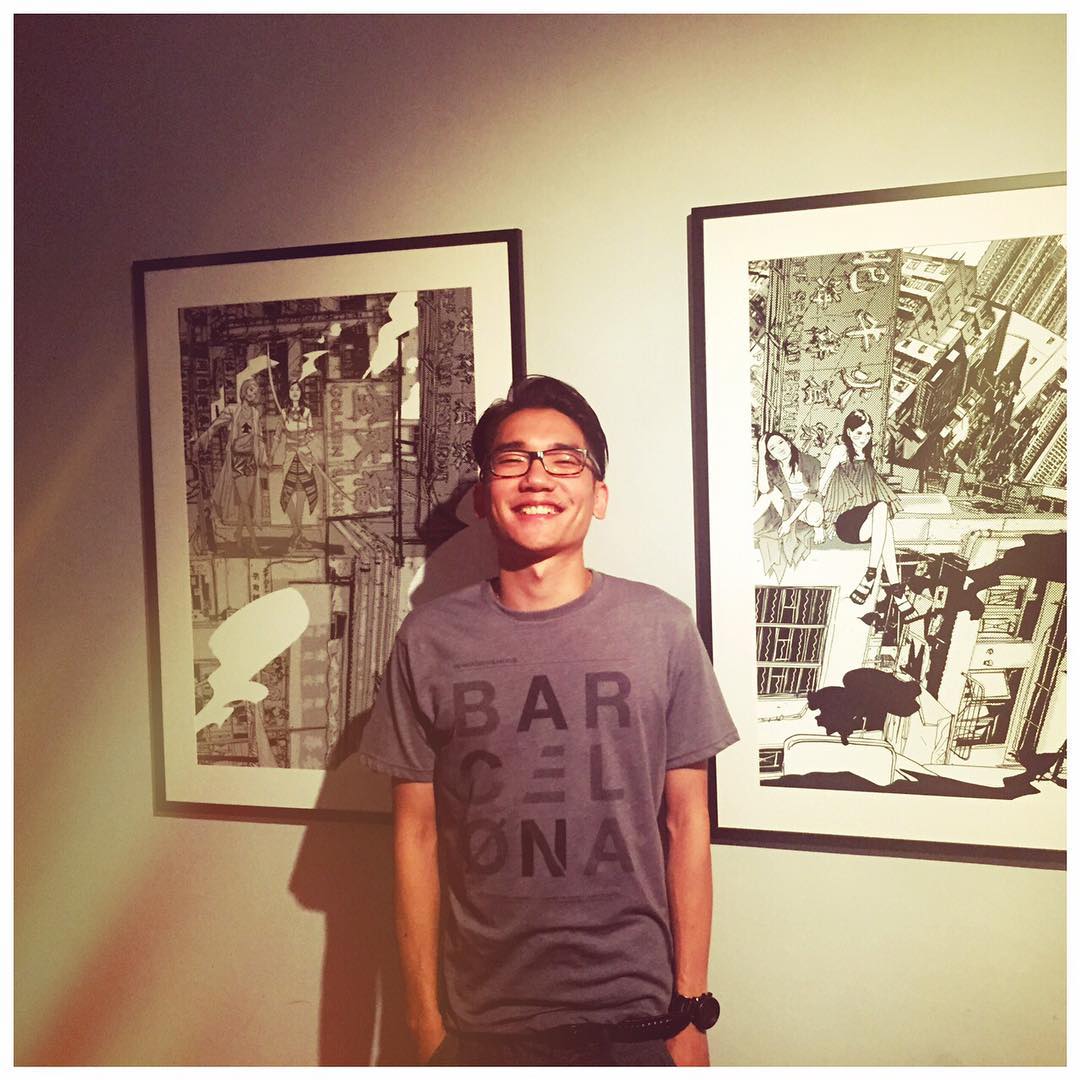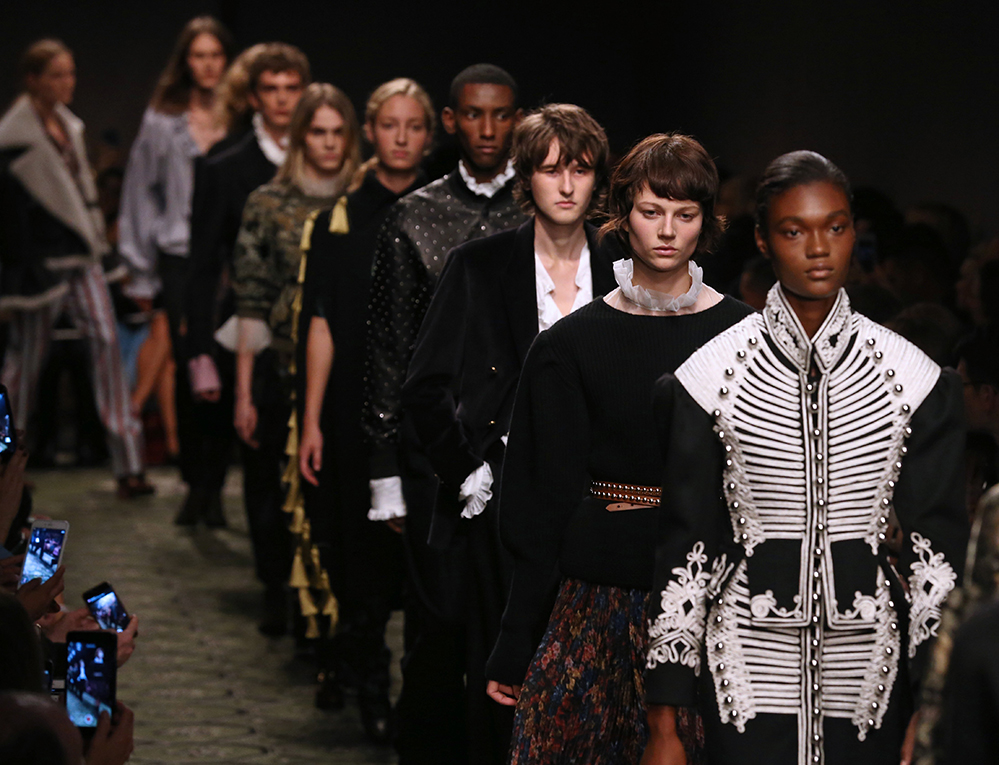
For an industry driven by a desire for the new, the months-long delay between seeing a new collection and having it in your hands was always frustrating. But this is increasingly becoming a thing of the past.
British luxury brand Burberry put on sale its entire September collection as soon as it was previewed on the London catwalk, days after Tom Ford and Tommy Hilfiger made similar moves in New York.
Monday’s show, live streamed online around the world, was rich in historical references with heavy prints, military embroidery on jackets and ruffs inspired by Virginia Woolf’s epoch-spanning novel Orlando.
“I like traditional, beautiful, slow crafts, but we are living in a moment that changes everything — and speed is everything,” Burberry creative director and chief executive officer Christopher Bailey told reporters. “We’re changing the way that we all work and think and live.”
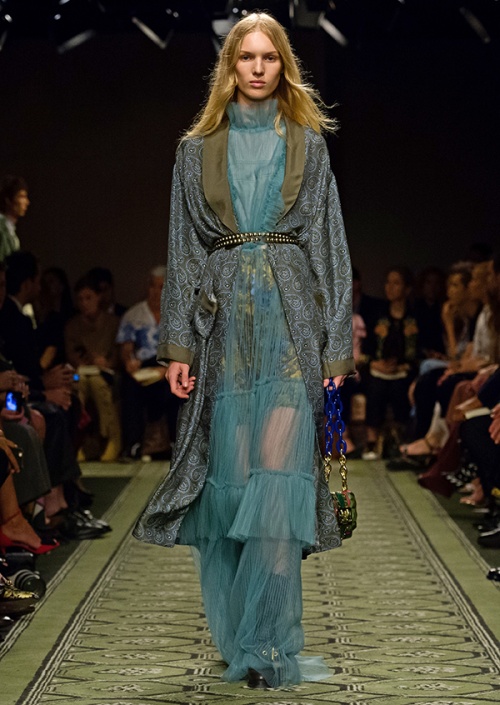
The move to “buy now” means ditching the long-established tradition of showing one season ahead, a radical change that has an impact right down the supply chain.
It has pitted the more business-centric fashion weeks in London and New York against Milan and Paris, where luxury labels such as Dior and Chanel argue that instant gratification will disrupt the creative process.
But Bailey said the shift naturally follows the democratisation of fashion shows through live streaming, in which Burberry was a pioneer and which is now used in most of London’s on-schedule shows.
“We will reflect after this show what has worked, what hasn’t worked. But I get excited about new things,” he said.
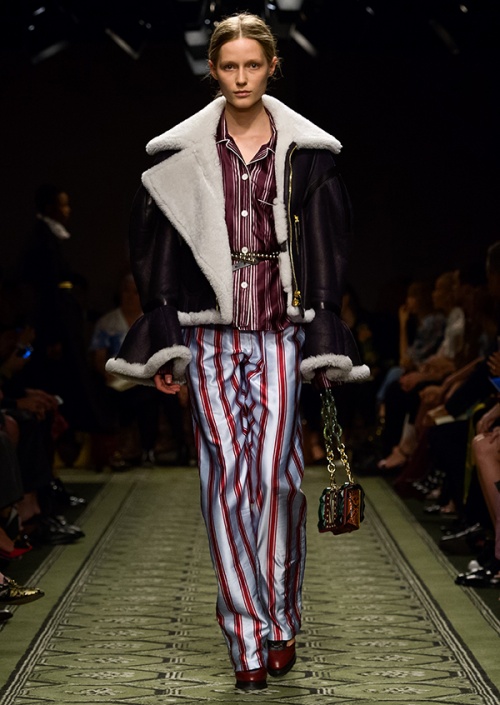
High street giant Topshop also embraced the “buy now” model, selling 60 per cent of its new Unique collection immediately after Sunday’s London show, in what creative director Kate Phelan said was a response to a new kind of customer.
“They’re looking at blogs, Instagram and fashion in a different way,” Phelan told British Vogue. “If they see a girl wearing a red dress, they want to go out and buy that red dress and they don’t understand that it’s a season, just that it’s a red dress.”
The collection, which was inspired by London’s fashion markets in the 1980s, was available to buy online, in some stores and at a “pop-up” market stall at the catwalk venue of Spitalfields Market.
Fashion mogul Francois-Henri Pinault, whose Kering group owns Gucci, Saint Laurent, Alexander McQueen and Balenciaga, has previously said the new model went against the “dream and desire” that drives the industry.
For Burberry, it coincided with the merging of the brand’s men and women’s lines, resulting in just two shows a year rather than four, which Bailey said had led to a “much calmer season”.
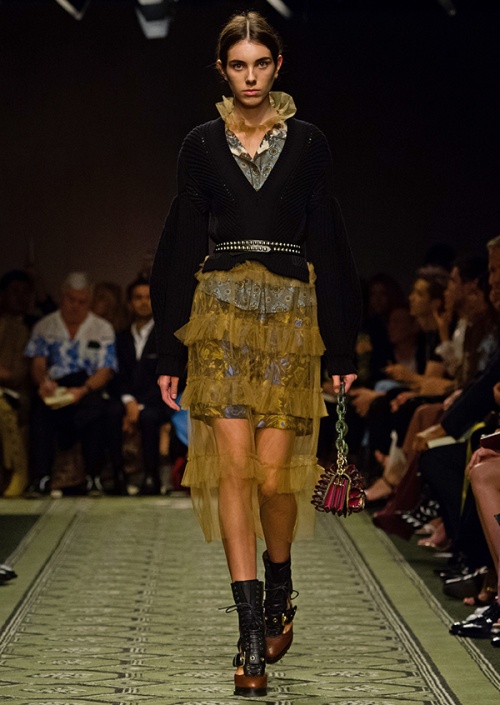
But selling off the catwalk is a challenge for smaller brands. They do not have their own shops and use fashion week as a showcase for buyers, who place orders that the designers fill over the coming months.
Temperley London is known for its modern take on bohemian style using artisan techniques with hand-worked details.
This season it sold three items straight after its London show via social media platform Vero, but designer Alice Temperley said any more would be a struggle.
“We couldn’t do the whole collection without changing our entire business model,” she told AFP.
With consumers becoming ever more demanding, such brands may have no choice but to speed up the delivery process, however.
“Consumers now live in a very fluid present, and that is where the brands need to be,” said Magdalena Kondej, retail analyst at Euromonitor International.
“Fast fashion has an obvious advantage in terms of already efficient supply chains but it is luxury brands that will have to adjust on a bigger scale and shorten the period between runway buzz and retail availability.”


